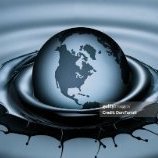Raja Ferry Safety Sucks
-
Recently Browsing 0 members
- No registered users viewing this page.
-
Topics
-
Popular Contributors
-
Latest posts...
-
29
Transport Thai Woman Tests Taxis, Charged 700 Baht for 100 Baht Fare
maybe taxi fare in Bangkok is cheap for you, but not for other, expecially thai people, where salary is far away lower than european salary, maybe will be good if they increase yours bill and tax, how is that -
15
Tate Brothers to Face 21 Charges in UK, Including Rape and Human Trafficking
It's a set up like Assange. -
42
SS via Manila - or?
Effective April 14, 2025, you must prove your identity in person if you need to change your direct deposit information -
7
Fire, Faith, and Free Speech: The Koran-Burning Case Testing British Liberties
Too much consideration is give to the Muslim faith in the UK. We should not allow a two tier legal and religious system to cater for the muslim faith. Sharier courts and mosques are increasing and should be controlled. -
15
Report Thai Government Backs Thaksin's Strategy to Tackle Drug Menace
And there you have it who really is running this s**t show. 🙈 -
15
Starmer’s Policy U-Turns won’t win back lost voters doubts as Leadership Pressure Mounts
Genuine question: When do you think that Starmer will be gone by?
-
-
Popular in The Pub
-












Recommended Posts
Create an account or sign in to comment
You need to be a member in order to leave a comment
Create an account
Sign up for a new account in our community. It's easy!
Register a new accountSign in
Already have an account? Sign in here.
Sign In Now